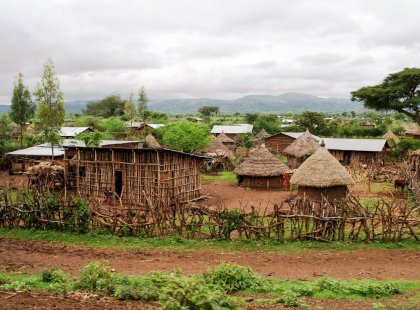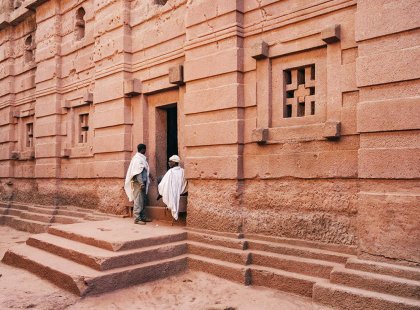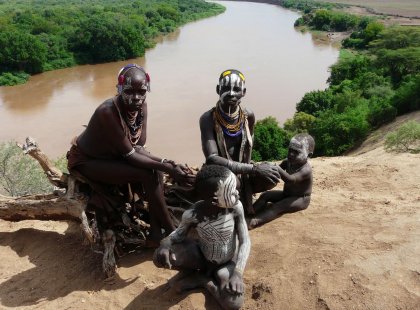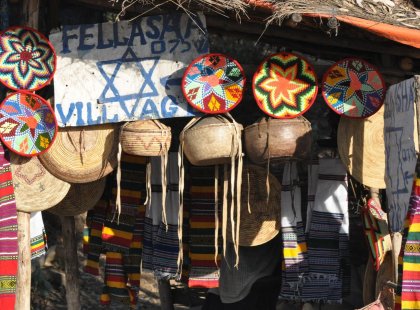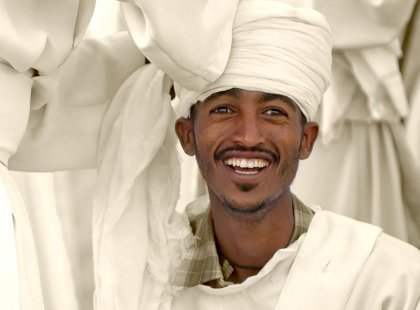Explore Ethiopia, the ‘cradle of humanity’. Travel to Ethiopia and discover a beautiful country, barely touched by modern society. It’s an incredible combination of history, tradition, culture and nature. From 3 million-year-old fossilised hominid remains in Addis Ababa to the rituals of the Ari, Hamer, Konso tribes and more through to amazing rock-hewn churches, hidden crypts and grottoes in Lalibela – this trip take you deep into human history. The 500-year-old monastery islands of Bahir Dar, the elegant castles of Gondar, the majestic geological formations of the Simien mountains, the giant obelisks that rise out of Aksum, and even the rumoured home of the Ark of the Covenant. This 19 day trip travels through the villages and wildlands of Ethiopia, taking in views of the Blue Nile and trekking to the peaks of the Simien Mountains (meeting red chested Gelada baboons). You’ll be sure to taste the country’s famous coffee and delectable cuisine, and meet the genuine and friendly people along the way. This is an adventure like no other.
-
Duration: 19 daysService level: Standard
-
Starts in: Addis AbabaPhysical Grading: Average
-
Ends in: LalibelaAges: 15+
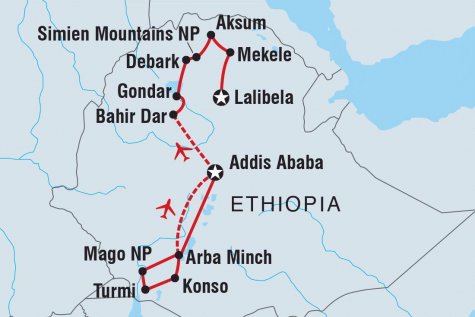
Itinerary
Start place: Addis Ababa
This afternoon, board a sightseeing boat for a cruise around the lake. Covering over 3,500 square kilometres, this is Ethiopia’s largest lake and is home to 37 islands, 20 of which house some of Ethiopia’s most venerated monasteries. Many of these monasteries are believed to date back to the 13th and 14th centuries, and feature superb ecclesiastical art. Legend has it that the Ark of Covenant was hidden here for protection during the times when Pagan forces invaded the ancient capital Axum. Your boat trip will take you to the monastery of Ura-Kidane Mehret, which dates from between the 16th and 18th centuries. It is renowned for its collection of crosses and crowns, and its incredible painted walls that offer up a virtual 'who’s who' of Ethiopian saints. The boat returns to your hotel via the source of the ‘Blue’ section of the Nile.
End place: Lalibela
Inclusions
Included
- Jinka - Ethnographic Museum
- Konso - Village Visit
- Jinka - Ari Village
- Jinka - Hamar Village
- Omorate - Daasanach Village
- Arba Minch - Lake Chamo Boat Excursion
- Lake Tana - Boat Cruise
- Bahir Dar - Blue Nile Falls
- Simien Mountains National Park - Hike
- Aksum - Yeha Temple
- Tigray - Rock Church of Medhane Alem Adi Kesho
- Lalibela - Afternoon Tour
- Lalibela - Asheten Mariam Hike
-
Transport
Private vehicle, Boat, Plane -
Accommodation
Hotel (14 nights), Basic Hotel (1 night), Lodge (3 nights)



